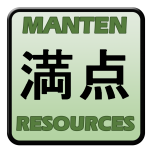Are you feeling motivated to freshen up your teaching and assessment task schedule? If you are looking for a way to embed growth mindset ideals in a formative assessment context, then this is the resource you have been looking for. The Stage 5 Formative Assessment Writing Resource is professional development for your department and a student assessment task all rolled into one. This resource provides you with everything you need to run the task plus a summary of the evidence based research that contributed to its design. You will learn how to facilitate the task and why each step is relevant to the learning process.
This task develops writing skills in Japanese. It is pitched at Stage 5 Year 9 students but could be modified to suit other grades.
This task will suit teachers who:
- Are striving to develop peer feedback and self-analysis skills in their students
- Are committed to growth mindset principles and the long term benefits for their students
- Want to see their students learn from and use the feedback they receive in subsequent tasks
- Want to increase the quality and quantity of feedback received by their students within a sustainable workload structure
- Are looking for a fresh take on assessment, based on evidence based research
What is included in the Stage 5 Formative Assessment Writing Resource pack?
Each pack includes:
- A student workbook to guide students through the stages of the task
- A teacher support pack that explains each step, provides suggested outcomes, success criteria, an annotated student work sample of what constitutes effective and not so effective feedback, teacher marking comment bank, professional readings summaries
- Peer feedback prompts worksheet
- Self-analysis prompts worksheet
- Student Pre-test google form
- Growth mindset teacher marking comment bank
- Student feedback sheet
How can I order a copy?
The total cost for the pack is $75. You can order simply by emailing jblog1help@gmail.com. Please provide us with the email address you would like the resource sent to and any billing requirements (eg bill to a school or as an individual, provide a quote only etc). The copyright allows you to print off the resources or edit them as you wish amongst the staff within your school campus. They cannot be shared with others outside your school campus.
This resource would work well with the Hiragana Patch and Katakana Patch resources. For more information on these click here.
Teacher review of Growth Mindset Writing Task Stage 5 Japanese
As a language teacher, I find one of the most challenging aspects of our job is creating and/or sourcing meaningful, authentic and well matched assessment tasks. After a discussion with Liberty last year she told me of her idea to make an assessment bank where teachers could pick and choose different components from so that each task would be unique. I told her that I would find that invaluable and would definitely be interested in purchasing such a resource.
During the holidays Liberty sent the Growth Mindset Writing Task for me to have a look over and provide any feedback. I found it to be an excellent task and exceeding all my expectation on many levels.
Firstly, the growth mindset is so appropriate for a challenging task like Japanese writing. I love the inspirational quotes along the way that encourage students to ‘ganbatte’ even when the going gets tough and encourages them to be brave and take risks. A valuable quality of any successful language learner!
Secondly, the task is very well scaffolded for the students and the Success Criteria is detailed, clear and concise. They know what to include and are given ideas on how to make their responses more sophisticated. It makes the task achievable and valuable as they can see its relevance and purpose.
Thirdly, the teacher is well supported and does not need to reinvent the wheel! There is a Google form pre-test to assess what they already know, a Peer Feedback sheet, a Student Self-analyse sheet and even a Comment Bank for providing feedback that will be positive and valuable! There is also a choice of questions for teachers to select from.
Furthermore, the task structure comprises of seven steps. 1. Teacher presents task, 2. Pre-test (no mark), 3. Students write text 1 (no mark), 4. Peer review of another students work with very clear guidelines (12.5%) 5. Teacher reviews text 1 and peer review and provides feedback but no mark. Student does a self-analysis (12.5%), 6. Text 2 – students only now get marked (75%), 7. Celebrate achievements and new skills learned! I believe such an approach is setting students up for success and not failure and I would highly recommend this assessment task and a pool of other tasks!
Simone, Asquith, NSW
